Matt, Mark, Rick and I were yearning for a trip in the woods and selected an easy trip into Jockeybush Lake for an overnight camping trip. With temperatures in the mid-40s our hike was pleasant. Jockeybush Lake is a 1.1 mile hike up a 200′ grade with two small stream crossings. Access to the trail head begins across from Lake Alma on Route 10 with parking is adjacent to yellow and brown trail sign. The trail follows a stream ith several small waterfalls that flows from the Jockeybush Lake into West Sacandaga River.
We celebrated seeing a Unicorn – Mark finally participating on a winter camping trip- we took pictures of the waterfalls on our hike in, and observed a “Joanie loves Chachi” tree carving from a previous trip that went bad.
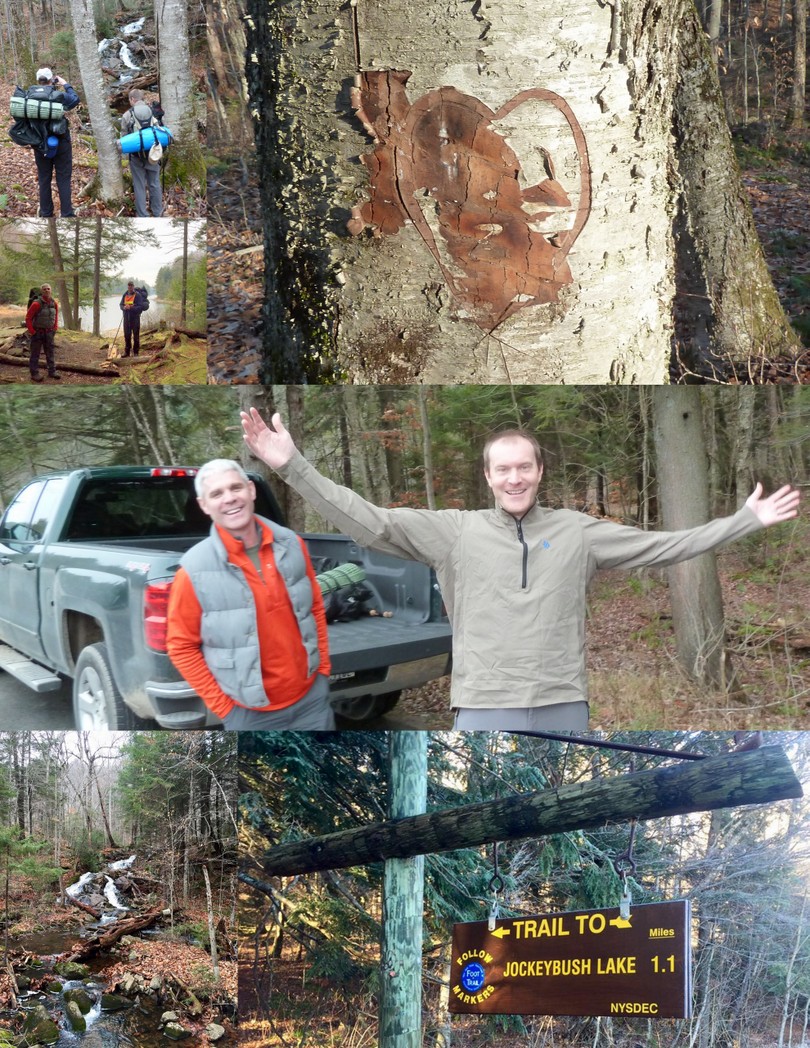
The south east end of the lake has a log jam across it, allowing one to cross to an area of large, flat rocks. We used trekking poles for balance and safely crossed dry on the way in. In the morning on the way out, however, it was a different matter. The logs were covered with frost and slippery. Matt got his boots wet at the start of the crossing and then plunged his foot into the water after slipping on the frosty log.
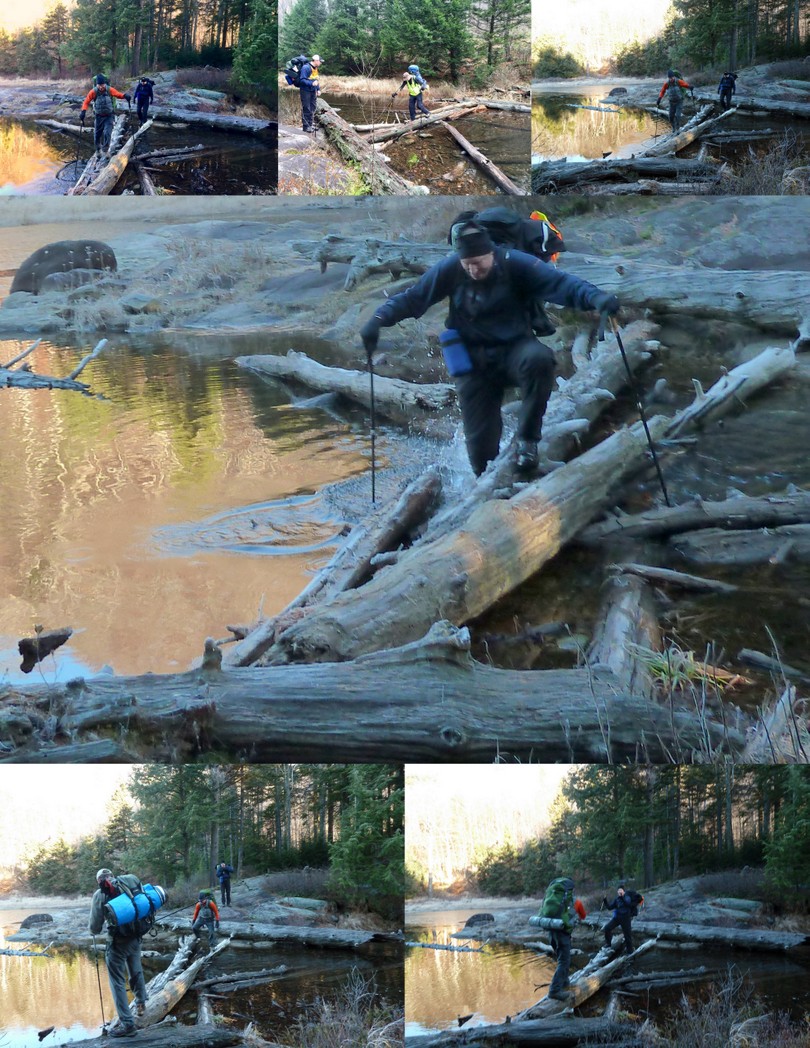
The view of the lake from this end is wonderful, however we found it devoid of wood and being cooled by winds sweeping down the lake. We followed an unmarked, but easy to follow trail around the north shore of the lake to another camp location where we deployed our various shelters. I used my Black Diamond 1st Light tent, Matt used his tarptent and Mark and Rick used hammocks; Rick’s 4th attempt and Mark’s 1st use of a hammock for winter camping. Mark added a festive atmosphere by hanging holiday lights around his hammock.
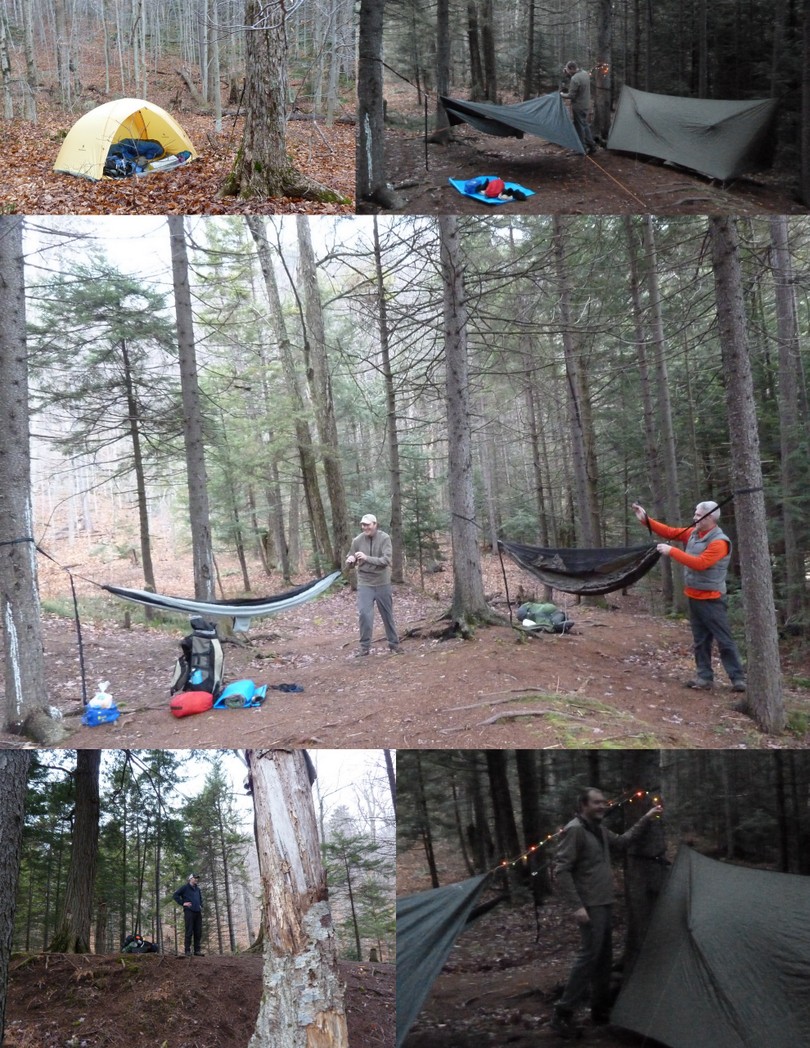
After setting up our tents we gathered firewood for cooking and an extended evening chatting around the fire; one of my favorite aspects of winter camping. As the wind died down it actually felt a little warmer as the evening went on and we managed to stay up until 9pm before turning in. Matt and Mark cooked brats on a stick over the open fire. Rick used his alcohol stove to cook pasta and I boiled water from the lake over my Solo Stove.
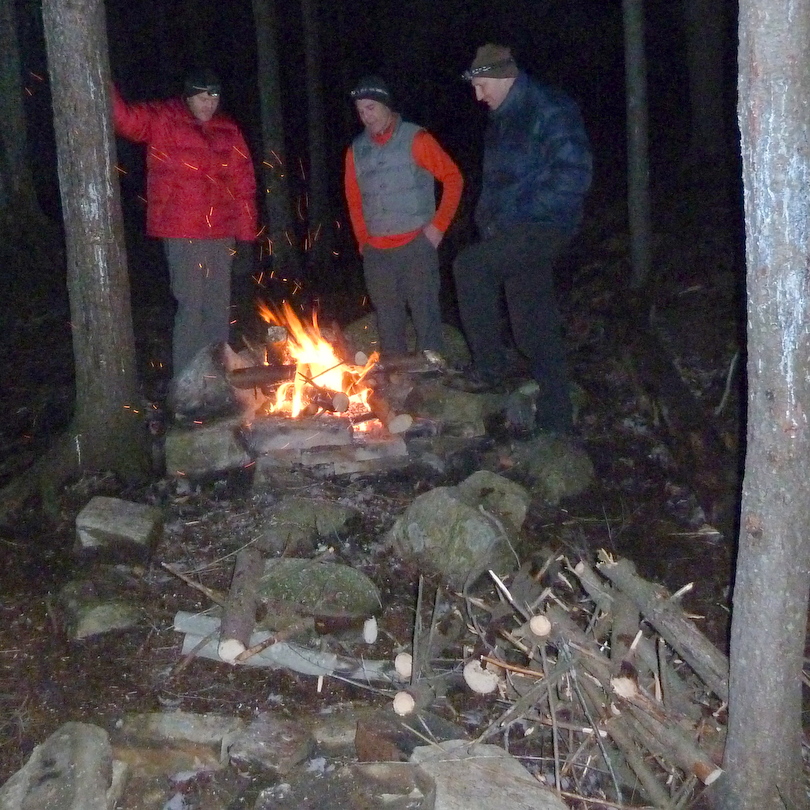
The solo stove consists of a main burn chamber, for burning the twigs, and a separate pot stand which a metal ring with three feet and a gap that lets you add twigs and small pieces of wood – roughly finger sized. Rising hot air pulls air through the bottom vent holes. This air movement fuels the fire at its base while also providing a boost of preheated air through the vent holes at the top of the burn chamber. The double wall Solo Stove is a natural convection inverted downgas gasifer stove. The air intake holes on the bottom of the stove channels air to the bottom of the fire while at the same time, channels warm air up between the walls of the stove. This preheated oxygen feeding back into the firebox through the smaller holes at the top of the stove causes a secondary combustion. There is also a heat shield between the ash pan and the bottom of the stove which protects the ground under the stove from scorching.
This was my 1st time using the Solo Stove which I intended as a winter camping backup stove. It worked well for one person, boiling 20 oz. of water for my freeze dried dinner in ~10 minutes. It used 3-4 handfuls of twigs. For an optimal burn it requires constant feeding, but it burned well with a mixture of dry and damp sticks. The stove balanced well and I did not feel a need for a separate wind screen. The usual issues with soot covering your pot exists – just like cooking over any wood fire.
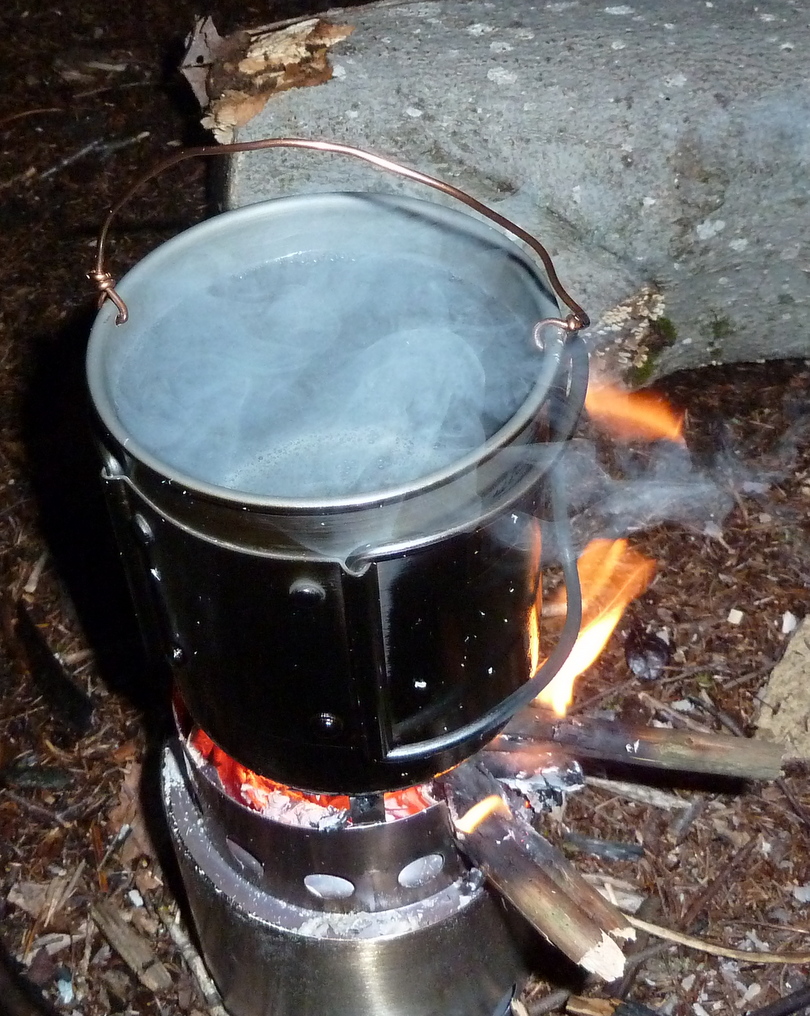
Overnight the temperatures dropped below freezing, causing the lake to freeze over with interesting ice patterns.
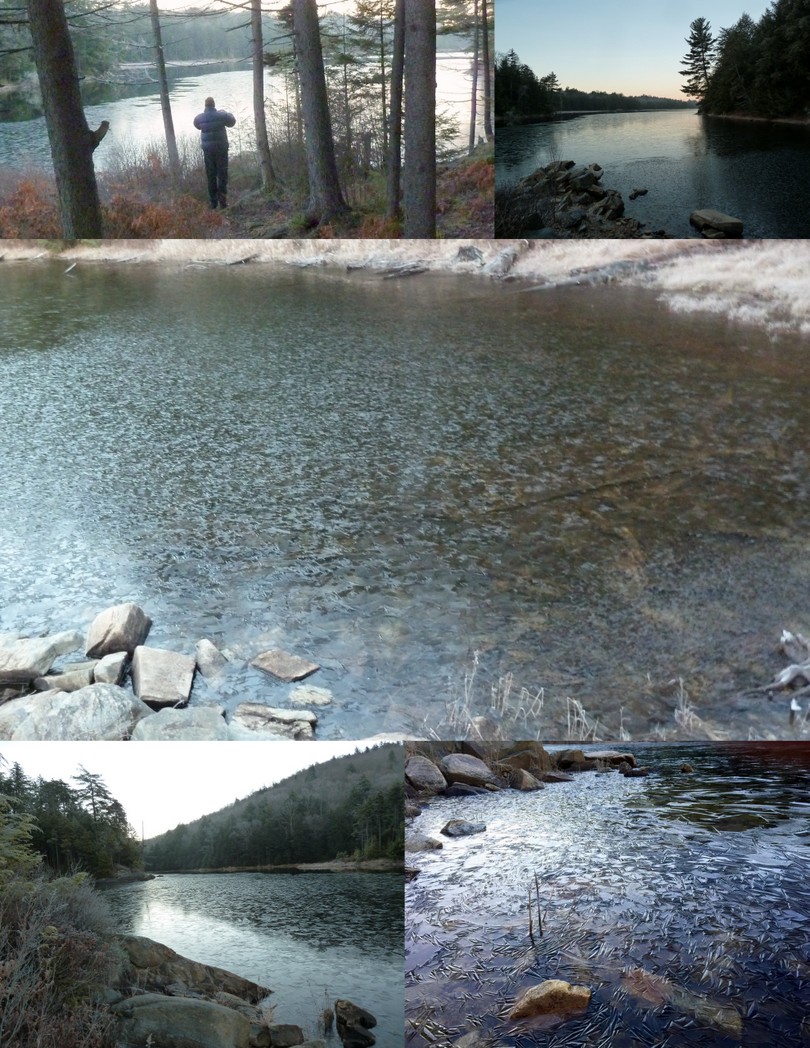
We encountered “Frost Flowers” on our hike out; something I had never seen before. These are one of the stranger ice formations found in the woods; crystallofolia are delicate ice formations that form from water emitted along a stem during a hard freeze in late fall/early winter. From Latin crystallus for ice and folium for leaf these are commonly called “frost flowers” or “feather frost”.
A typical example looks like a small puff-ball of cotton candy, a few inches across, made up of clusters of thin, curved ice filaments. The petals of frost flowers are very delicate and will break when touched. They usually melt or sublimate when exposed to sunlight and are usually visible in the early morning or in shaded areas.
Frost flowers usually grow on a piece of water-logged wood. It’s something of a rare find with conditions having to be just so before it will form. The formation of frost flowers is dependent on a freezing weather condition occurring when the ground is not already frozen. The moisture in the plants or dead wood expands when frozen, causing cracks to form in the stem. Water is then drawn through these cracks via capillary action and freezes upon contact with the air. The capillary action pulls moisture up from damp ground which continues to freeze and adds to what’s already frozen there. As more water is drawn through the cracks the thin ice filaments are essentially pushed out from pores in the wood as they freeze.
It’s something of a misnomer to call this frost since it freezes from liquid water, not water vapor. None the less, they were beautiful to see.
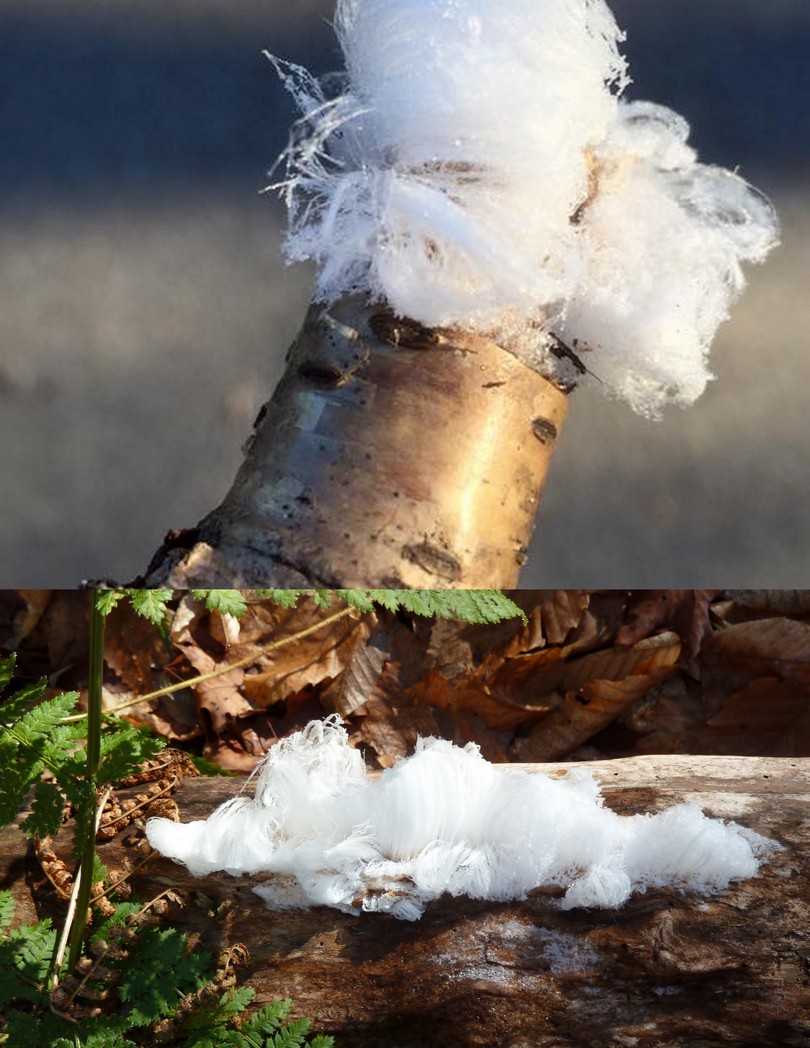
SHARE
